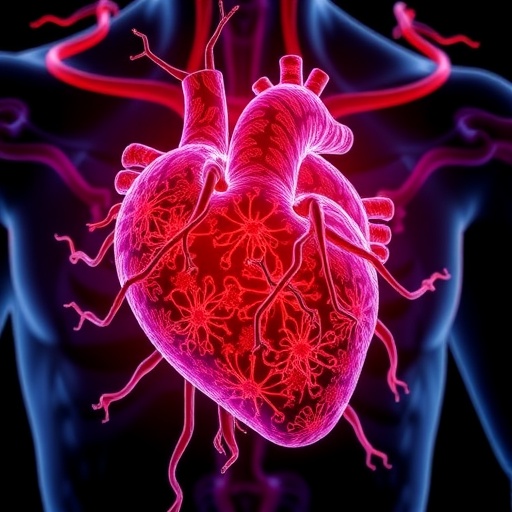In a breakthrough study, researchers have unveiled the acute cardiotoxic effects of Aldrin, a longstanding pesticide that has been under scrutiny for its environmental impacts. This research, spearheaded by Souza, Beserra, and Marques, delves into the unexpected role of sodium channel Na_v1.5 in mediating these detrimental effects. Traditionally, the focus on Aldrin has primarily rotated around its neurotoxic properties, leaving a significant gap in understanding how it impacts cardiovascular health.
Aldrin’s usage, particularly in agricultural realms, has raised concerns not solely for its environmental persistence but also for its potential to disrupt human health. As the study demonstrates, the toxicity of Aldrin is not merely confined to the nervous system, but extends its reach to heart tissues, posing risks that have largely gone overlooked. The researchers provide compelling evidence that exposure to Aldrin can lead to acute electrocardiotoxicity, marking a significant step in understanding how pesticides can affect human health beyond their intended agricultural application.
One of the key findings in the research is the role of Na_v1.5 sodium channels, which are crucial for the proper functioning of cardiac cells. Aldrin exposure was shown to alter the normal ionic currents through these channels, which can lead to arrhythmias and potentially fatal heart conditions. The insights gained from the team’s investigations raise questions about how widespread pesticide exposure might contribute to the growing incidence of cardiac diseases in populations, especially in agricultural communities heavily reliant on such chemicals.
Historically, Na_v1.5 has been primarily studied in the context of inherited cardiac conditions and sudden cardiac death syndromes. However, the intervention of a common environmental toxin illustrates how pivotal it is to reassess our understanding of such sodium channels. By linking the cardiotoxic impacts of Aldrin with its modulation of Na_v1.5, this research opens new avenues for further studies into other environmental toxins and their impacts on cardiovascular health.
The implications of this discovery are significant. The agricultural industry, along with policymakers, may need to rethink the regulation of substances like Aldrin, which possess not only acute but potentially long-term health risks. Given the global reliance on pesticides to boost crop yields, a careful balance needs to be struck between agricultural demands and public health safety. This research emphasizes the need for stricter regulations and better education on the potential health impacts of pesticide use.
Moreover, the cardiovascular implications of environmental toxins extend beyond just Aldrin. This study serves as a wake-up call to examine the cumulative effects of multiple pesticide exposures on heart health. As chemical formulations become more complex, understanding how these mixtures interact with biological systems is essential. The use of high-throughput screening and bioinformatics could aid in revealing the synergistic effects of various pesticides, leading to more comprehensive risk assessments.
In light of these findings, it is instrumental for healthcare professionals to become more aware of the potential links between pesticide exposure and cardiovascular diseases. Ensuring that patients from agricultural backgrounds are screened for cardiovascular anomalies could facilitate earlier intervention, possibly mitigating severe outcomes connected to pesticide toxicity. These insights also stress the importance of developing guidelines for medical professionals to discuss environmental exposures with patients, especially those living in rural areas where pesticides are predominantly used.
Importantly, the research conducted by Souza et al. highlights an urgent need for multidisciplinary approaches that encompass toxicology, cardiology, and environmental science. With only limited studies addressing the intersection of these fields, collaborative efforts could yield robust strategies to combat the impacts of pesticide exposure. Increased funding and support for such interdisciplinary research will be crucial as we navigate the complexities of human health in the face of environmental challenges.
The findings could also pave the way for innovative therapeutic strategies aimed at modulating the effects of Na_v1.5 channels in acute cases of cardiotoxicity due to environmental agents. Understanding the mechanisms through which Aldrin affects cardiac cells may inspire novel intervention techniques that could be employed in clinical settings. As science continues to evolve, we must remain vigilant about how environmental factors can influence the biological underpinnings of various health conditions.
In conclusion, the study of Aldrin’s cardiotoxicity is a prime example of how prevalent environmental chemicals can significantly alter our understanding of disease pathology. As the world faces increasing environmental challenges, this research implores scientists, healthcare professionals, and policymakers alike to rethink conventional paradigms surrounding pesticide exposure. It stands as a reminder that our relationship with the environment has profound implications for public health, necessitating a better understanding of how toxins influence our bodies in often unforeseen ways.
While the research certainly paints a concerning picture regarding pesticide exposure, it also serves as a beacon of hope for future studies. Many of the solutions to address the complications introduced by environmental toxins could rely on increased awareness and community engagement. As global movements for sustainable agriculture gain momentum, further investigations into safer agricultural practices and alternative pest control methods will be imperative. The direct correlation between agriculture and health must guide our approach to both farming methods and public health initiatives, ensuring a resilient future for both the environment and human health.
Through this comprehensive understanding, we begin to unravel the layers of complexity inherent in environmental health. The focus on Aldrin’s unique interplay with Na_v1.5 offers just a glimpse into the myriad interactions between chemicals and biological systems. As we advance in our technological and scientific capabilities, a pivotal shift is required to prioritize the health of both our planet and its inhabitants, steering us toward a sustainable and healthier future.
Subject of Research: Acute electro cardiotoxicity of pesticide Aldrin
Article Title: Acute electro cardiotoxicity of pesticide Aldrin: unexpected role of Nav1.5.
Article References:
Souza, D.S., Beserra, S.S., Marques, L.P. et al. Acute electro cardiotoxicity of pesticide Aldrin: unexpected role of Nav1.5.
Environ Sci Pollut Res (2025). https://doi.org/10.1007/s11356-025-36884-5
Image Credits: AI Generated
DOI: 10.1007/s11356-025-36884-5
Keywords: acute cardiotoxicity, Aldrin, sodium channels, Na_v1.5, pesticides, cardiovascular health, environmental toxins, heart health, agricultural chemicals, public health.




